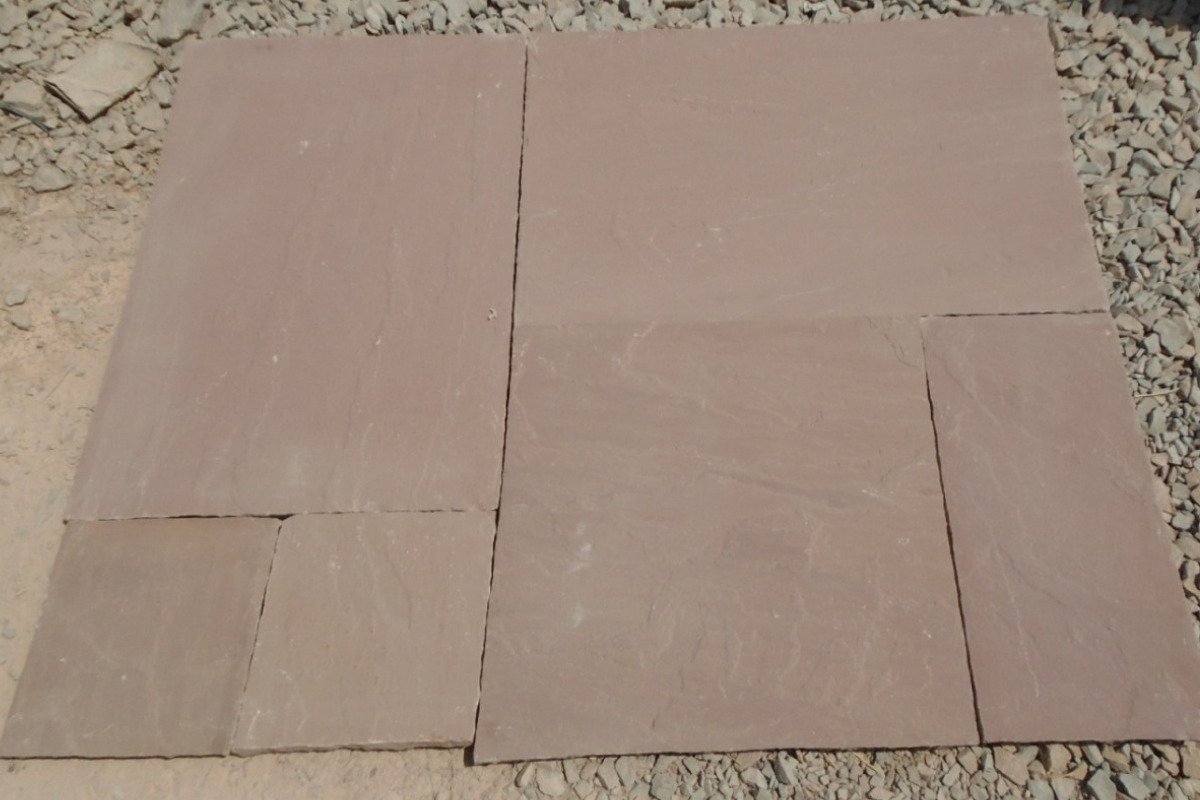India, renowned for its diverse geological features, boasts a wealth of natural resources, with sandstone standing out as one of the most significant. Over the past few years, India has emerged as a leading exporter of sandstone, catering to global markets while gaining recognition for its high-quality products. This blog will delve into the rise of sandstone exporter in India, highlighting key players in the industry and the prevailing market trends that are shaping its future.
Understanding Sandstone
Sandstone is a sedimentary rock primarily composed of quartz and feldspar, with varying proportions of other minerals. Its unique properties—such as durability, workability, and aesthetic appeal—make it an attractive material for construction and decorative purposes. Sandstone is widely utilized in various applications, including architectural facades, paving, and landscaping. India’s rich deposits, particularly in states like Rajasthan, provide a competitive advantage, enabling the country to emerge as a major supplier in the global sandstone market. The different colors, textures, and finishes of Indian sandstone cater to diverse architectural styles, making it a favored choice among builders and designers worldwide.
Key Players in the Indian Sandstone Export Market
1. Rajasthan State Mines and Minerals Limited (RSMML)
As a government undertaking, RSMML plays a pivotal role in the mining and processing of sandstone in Rajasthan. The company operates several mines across the state, ensuring a steady supply of high-quality sandstone. RSMML is known for its commitment to sustainable mining practices, focusing on minimizing environmental impact while maximizing resource utilization. Its emphasis on quality assurance and customer satisfaction has helped it build a strong reputation, both domestically and internationally.
2. Banswara Grey Sandstone
Situated in Banswara, this company specializes in a variety of sandstone products, including slabs, tiles, and blocks. Banswara Grey Sandstone has established a reputation for quality and timely delivery, catering to both domestic and international markets. The company’s production facilities are equipped with advanced machinery, enabling them to create customized solutions that meet specific client needs. Their attention to detail and innovative designs make them a go-to choice for architects and builders looking for unique sandstone features in their projects.
3. Sankalp Stone Industries
Sankalp Stone Industries has made significant strides in the sandstone export sector by focusing on innovative processing techniques and a wide range of products. Their state-of-the-art facilities allow for the production of various finishes and sizes, catering to diverse client requirements. By adopting sustainable practices and investing in employee training, Sankalp Stone Industries ensures that its workforce is skilled in both traditional and modern techniques. Their commitment to excellence and customer-centric approach has positioned them as a key player in the industry, attracting a loyal client base.
4. Shree Rishabh Stone Industries
Shree Rishabh Stone Industries is known for its extensive portfolio of sandstone products, emphasizing sustainable practices and social responsibility. The company sources materials responsibly and ensures that its production processes adhere to environmental regulations. By engaging in community development initiatives and providing employment opportunities, Shree Rishabh Stone Industries not only enhances its brand image but also contributes positively to the local economy. Their strong relationships with international clients have allowed them to expand their market reach significantly.
5. Satyam Stones
A relatively newer player, Satyam Stones has quickly gained a foothold in the market by leveraging technology for efficient production and marketing. The company focuses on online platforms to reach a broader audience, making it a notable contender in the sandstone export arena. By utilizing digital marketing strategies and e-commerce platforms, Satyam Stones effectively connects with clients across the globe. Their commitment to quality and customer service has enabled them to carve out a niche in the competitive market, attracting both small and large-scale buyers.
Market Trends Influencing Sandstone Exports
1. Growing Demand for Natural Stone
The global trend towards sustainable building materials has led to a significant increase in demand for natural stones, including sandstone. Architects and builders are increasingly opting for eco-friendly materials that offer both aesthetic value and durability. Sandstone’s natural properties, such as thermal resistance and low maintenance requirements, make it a preferred choice for various applications. Furthermore, as consumers become more environmentally conscious, the appeal of natural stone over synthetic alternatives continues to grow.
2. International Trade Agreements
India has benefitted from various international trade agreements that facilitate smoother exports. These agreements have opened up new markets, enabling Indian exporters to reach customers in Europe, North America, and the Middle East more efficiently. Countries such as the United States and the UK have shown a particular interest in Indian sandstone for their construction projects, driving demand. These trade partnerships not only enhance market access but also create opportunities for collaborations and knowledge sharing among industry stakeholders.
3. Advancements in Technology
Modern technology has transformed the sandstone processing industry, leading to significant improvements in product quality and efficiency. Techniques such as water jet cutting, CNC machining, and advanced polishing methods allow for greater precision and creativity in design. Exporters can now produce customized products that cater to specific market needs, enhancing their competitiveness on a global scale. Additionally, technology has improved supply chain management, enabling exporters to streamline operations and reduce lead times.
4. E-commerce and Digital Marketing
The rise of e-commerce has revolutionized the way sandstone exporters operate. Companies are increasingly using online platforms to showcase their products, making it easier for international buyers to browse and purchase. Digital marketing strategies, including social media promotion and search engine optimization, have become essential tools for reaching new customers and building brand awareness. This digital shift allows exporters to engage with a wider audience and respond to market trends more swiftly, adapting their offerings to meet changing consumer preferences.
5. Emphasis on Quality and Sustainability
Quality has become a key differentiator in the sandstone export market. Exporters are investing in quality control measures to ensure that their products meet international standards. Certifications such as ISO and adherence to environmental regulations enhance credibility and attract discerning clients. Additionally, there is a growing emphasis on sustainable mining practices, with many companies adopting eco-friendly techniques to minimize their environmental impact. This focus on sustainability not only enhances brand reputation but also appeals to environmentally conscious consumers who prioritize ethical sourcing.
6. Rising Competition
As the sandstone export market grows, so does competition. New entrants are constantly emerging, and existing players are expanding their operations to meet demand. This competitive landscape drives innovation, compelling exporters to improve their product offerings and customer service continuously. Companies are focusing on building strong relationships with clients, offering competitive pricing, and enhancing after-sales support to retain customers. This culture of competition ultimately benefits the industry by fostering a climate of excellence and responsiveness to market needs.
Challenges Facing Sandstone Exporters
Despite the growth opportunities, the sandstone export sector faces several challenges. Fluctuating global demand can create uncertainties in production planning and pricing. Transportation issues, including logistics and shipping delays, can further complicate operations and affect timely delivery. Regulatory hurdles, such as changing export policies and tariffs, can also impact profitability. Additionally, exporters must navigate the complexities of international trade regulations, which can vary significantly between countries. Furthermore, environmental concerns related to mining practices and the sustainability of natural resources are becoming increasingly important, necessitating a balanced approach to operations.
The rise of sandstone exporters in India signifies a promising future for the industry, driven by growing global demand and innovative practices. Key players are leveraging technology, focusing on quality, and adopting sustainable practices to enhance their competitiveness. While challenges exist, the commitment to eco-friendly practices and the strategic use of digital marketing are paving the way for a thriving sandstone export market.
As India continues to position itself as a leading supplier of high-quality sandstone, the global construction and landscaping sectors will undoubtedly benefit from this rich natural resource. The sandstone export industry not only represents economic opportunity but also reflects a broader shift towards sustainable practices and responsible resource management, ensuring that this valuable resource can be enjoyed by generations to come.
In conclusion, the future of sandstone exports in India looks bright, with potential for continued growth and innovation. As market dynamics evolve, the ability of exporters to adapt and respond to consumer needs will be crucial in maintaining India’s competitive edge in the global sandstone market. for more content read Empireadda.com.



